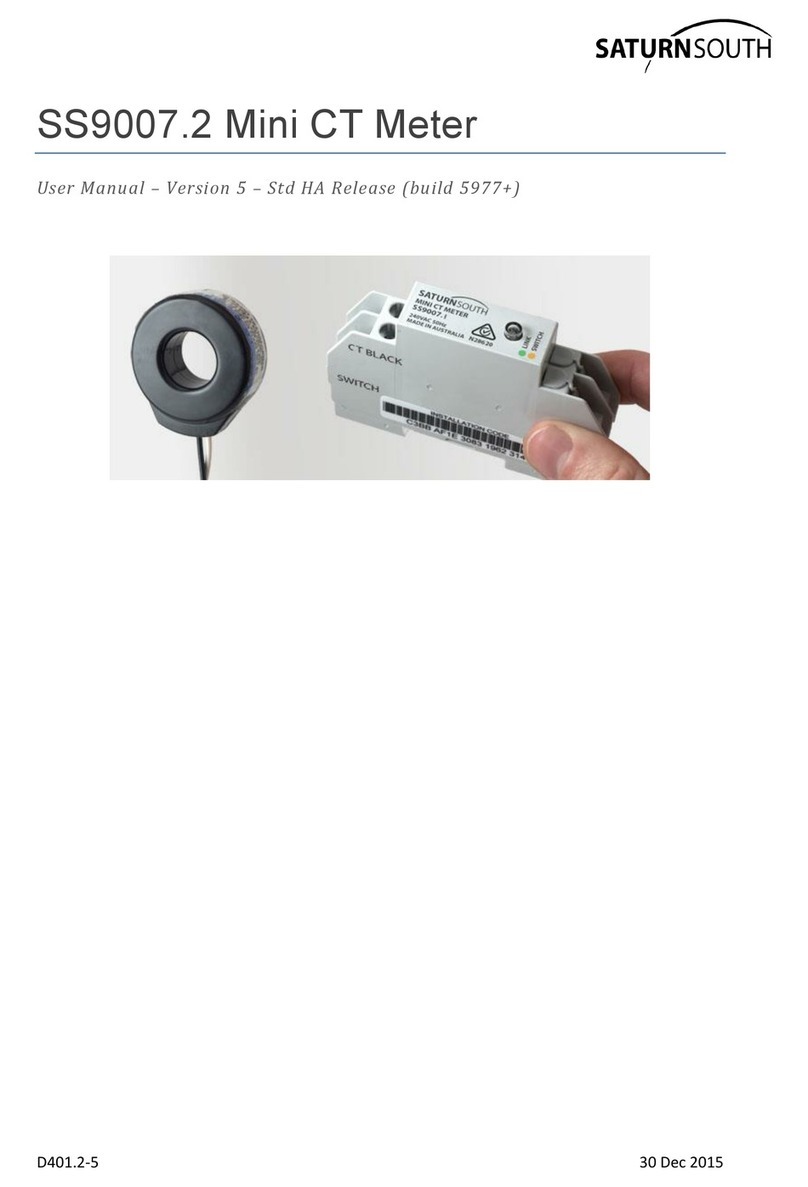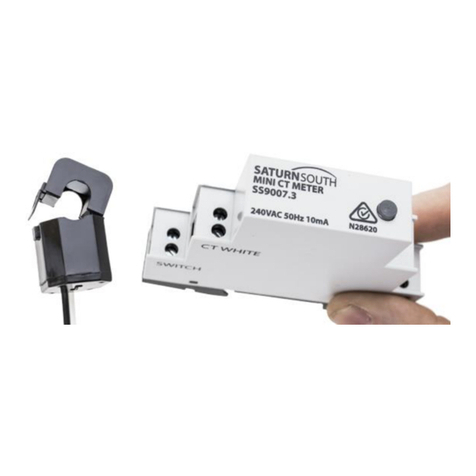
5
3Product Overview
The SS9005 Mini Three Phase Meter is a compact power metering and load switching device that can
be used to monitor three phase electrical loads or up to three individual single phase circuits.
Designed to sit on a standard switchboard DIN rail, the SS9005 has the same form factor as a
standard Residual Current Device, and accepts a wide range of external Current Transformers.
The SS9005 Mini Three Phase Meter is suitable for a range of applications including sub-metering,
Demand Management, autonomous load shedding, and site automation.
The SS9005 Mini Three Phase Meter is designed to meter and switch a wide range of single and
three-phase loads at up to 240VAC. Load switching is performed by an internal isolated relay that
can be used to trigger an external third-party contactor or relay. Designed to function in all major
electrical networks, the Mini Three Phase Meter boasts a high measurement accuracy (<1% error)
with a customizable reporting frequency of up to 1Hz. Import/export energy accumulations and true
signed active and reactive power measurements make the SS9005 an ideal choice for monitoring
renewable generation sources and energy storage devices.
Three phase consumption is tracked independently to provide instantaneous three phase power and
accurate three phase import/export energy readings. In addition to providing power factor
information for each monitored circuit, voltage phase separation angles are reported to enable
back-office reconstruction of full polar plots for three phase circuits.
High-resolution waveform sampling features provide unique insight into the behaviour and
condition of monitored loads, yielding detailed information for load profiling and classification
purposes.
Once installed, the Mini Three Phase Meter can receive important software updates over the
network, reducing the cost of network maintenance and guaranteeing an up-to-date feature set for
all devices in the field.
The SS9005 Mini Three Phase Meter communicates to other Saturn Energy devices using the ZigBee
communications standard in the 2.4GHz ISM band. All wireless communications to and from the
device are secured with AES-128 encryption using standards based technologies to ensure privacy
and data integrity.
Important:
The SS9005 Mini Three Phase Meter is not rated as a protection device, and must be placed
downstream of an approved protection device.





























